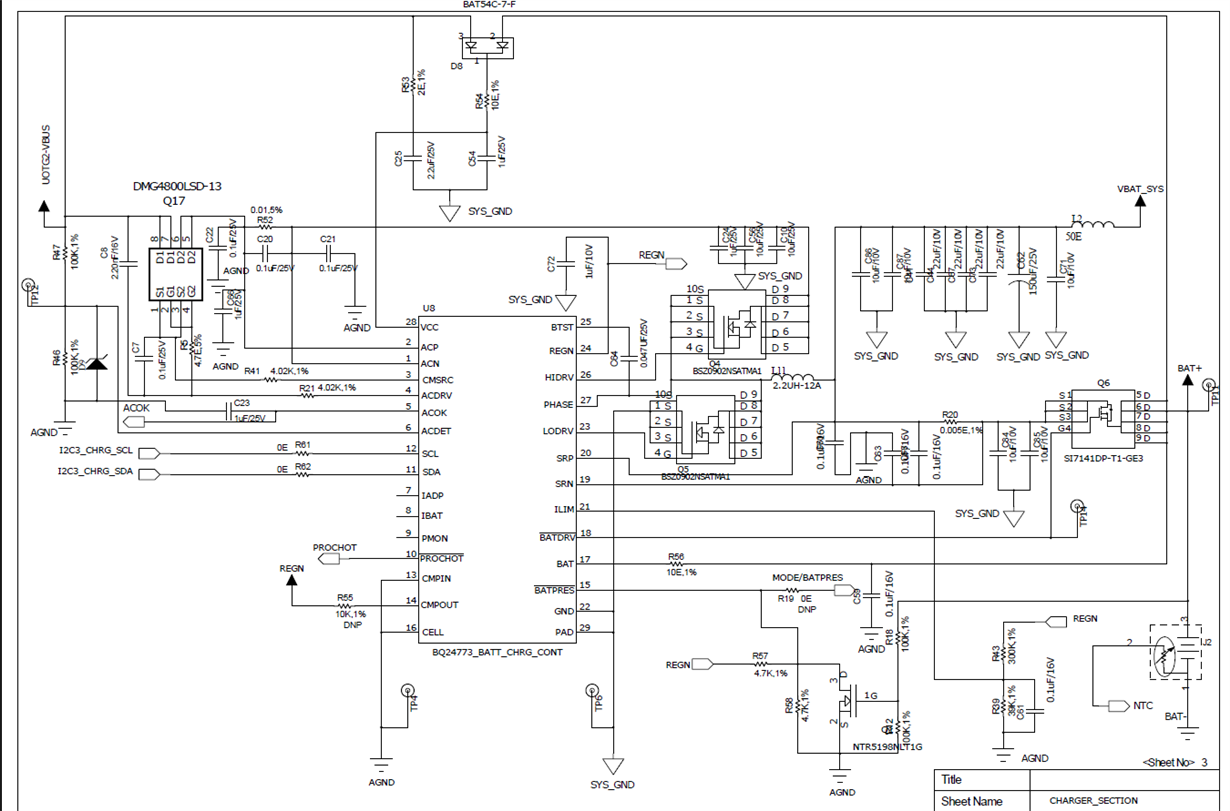Hello,
We are using BQ24773 for battery charging .
Given below is the configuration of charger chip:
- Maximum battery charging current- 4A
- Maximum battery Voltage- 4.2V
- Switching frequency-600KHz
- Power adapter specs: 15VDC/3A
Average system load is 5.7A (max) , so in the scenario when both unit load and battery charging current is being drawn from the buck converter total output current requirement becomes 9.7A (approx.).
In this scenario the maximum temperature of different parts is as given below:
a) ACFET/RBFET (DMG4800LSD-13) : 96 ֯C
b) High side MOSFET (BSZ0902NSATMA1): 85 ֯C
c) Low side MOSFET (BSZ0902NSATMA1): 94 ֯C
d) Inductor (SRP1038A-2R2M) : 98 ֯C
This temperature is measured when unit is working at 27 ֯C room temperature .
It will be really helpful if you can please provide your suggestions to reduce the temperature rise.
PCB is of 4 layers with size 50 mm x 28.5 mm and 2OZ copper thickness.
Schematic and pcb layout files are attached for your reference.
Regards,
Mihir


